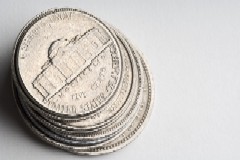Interesting Facts about Thomas Jefferson’s Monticello
History Trivia The United Nations World Heritage List includes Monticello in its rankings along with such international sites like the Great Wall of China and the Tower of London. In fact, it is the only American residence making the prestigious list. The following article offers a wide array of facts, trivia and information about Thomas Jefferson and his beloved home Monticello.
The United Nations World Heritage List includes Monticello in its rankings along with such international sites like the Great Wall of China and the Tower of London. In fact, it is the only American residence making the prestigious list. The following article offers a wide array of facts, trivia and information about Thomas Jefferson and his beloved home Monticello.
The Monticello estate includes Jefferson’s house and the five thousand acre plantation that was also home to as many as 135 slaves.
Jefferson began the construction in 1768 by leveling the spot for the foundation of his home.
The home was designed and constructed between 1769 and 1809.
The main house contains forty-three rooms.
Monticello contains the first dome ever installed on a house in America. It was added in 1800. The oculus, or glass, of the dome was made in Austria.
In Italian, Monticello means “little mountain.”
Jefferson left public service and retired to his plantation in 1809 along with his daughter Martha Jefferson Randolph and her family (that included eleven children).
In the entrance hall of the home, Jefferson decorated the walls with Native American artifacts, maps and paintings making it also into one of the country’s first true museums.
The entrance hall also contains the great clock and its case that Jefferson had designed himself.
A considerable number of Jefferson’s artifacts came from the famous Lewis and Clark Expedition.
Jefferson’s study at Monticello was known as the Cabinet and he spent a large portion of his day within it.
Jefferson’s cabinet held many scientific implements such as a telescope and microscope.
In the home’s parlor, Jefferson hung portraits of Magellan, Columbus and Vespucci along with other “discoverers” as he called them.
Monticello’s formal tea room contained plaster busts of Franklin, Washington and John Paul Jones.
Jefferson died on July 4, 1826 in his bed at Monticello.
Although Jefferson’s bedroom is painted a shade of white today, researchers believe it was wall papered in his time.
Jefferson’s book room at Monticello and its some 6,700 books would become the core of the Library of Congress.
Monticello’s exquisite gardens contains upwards of 250 vegetables and 170 fruits.
Monticello is open year round for the visiting public except Christmas.
Today, the as the public visits they may feel confident that about sixty percent of the furnishings they behold are original to the former President.
